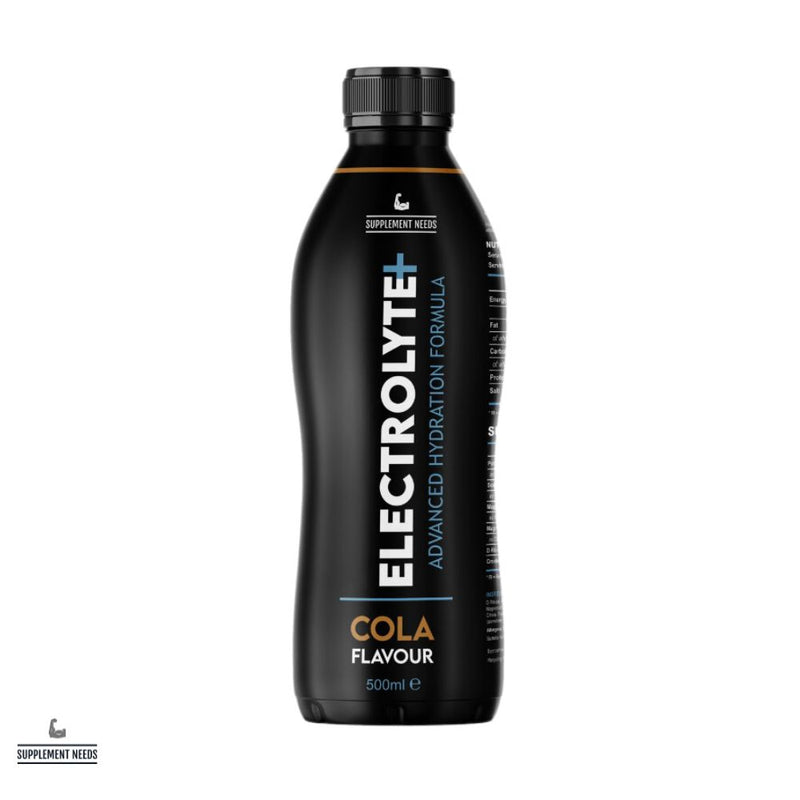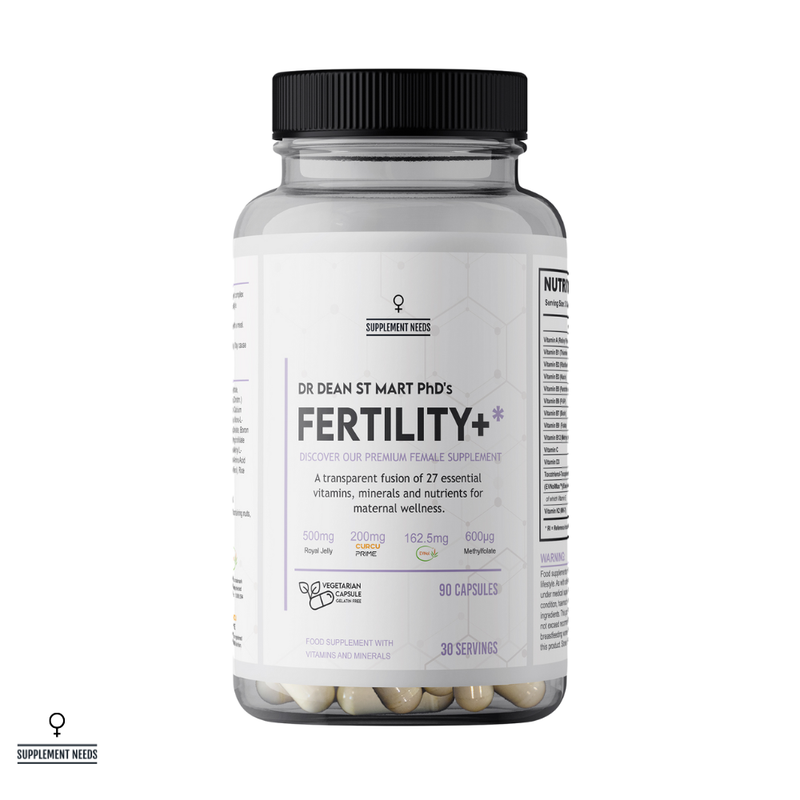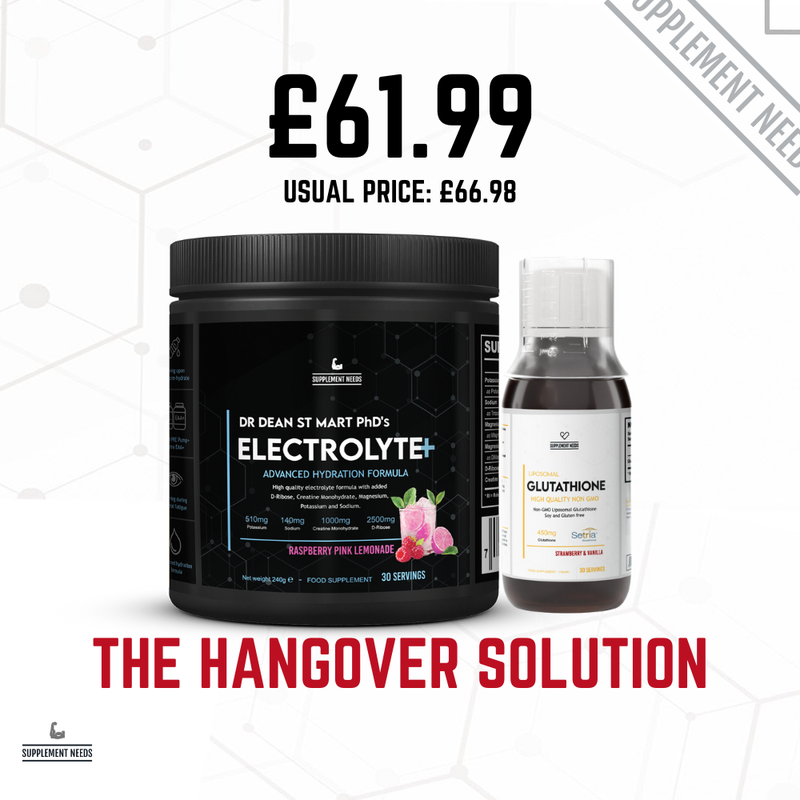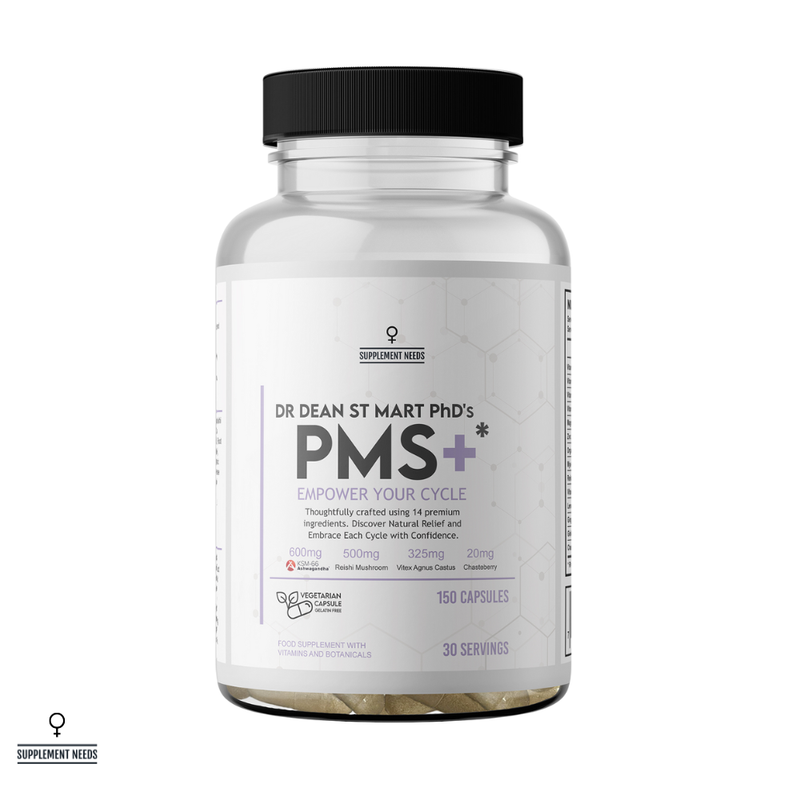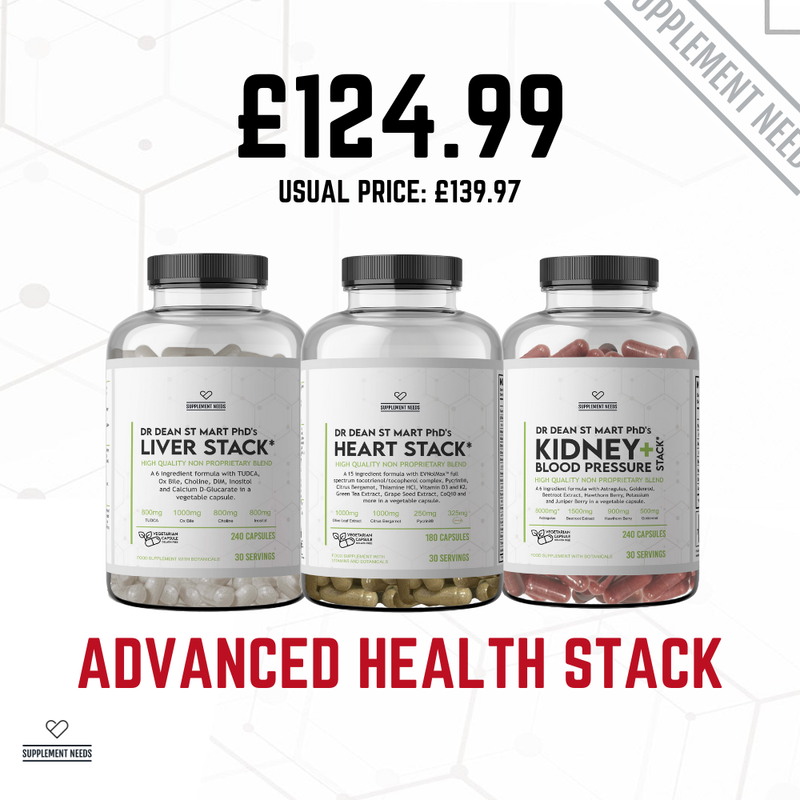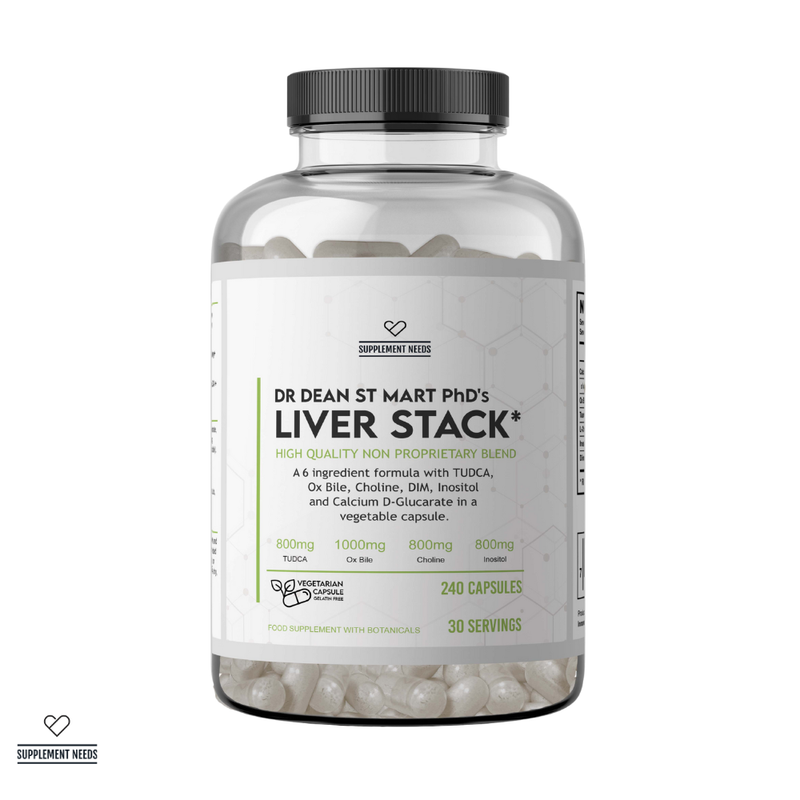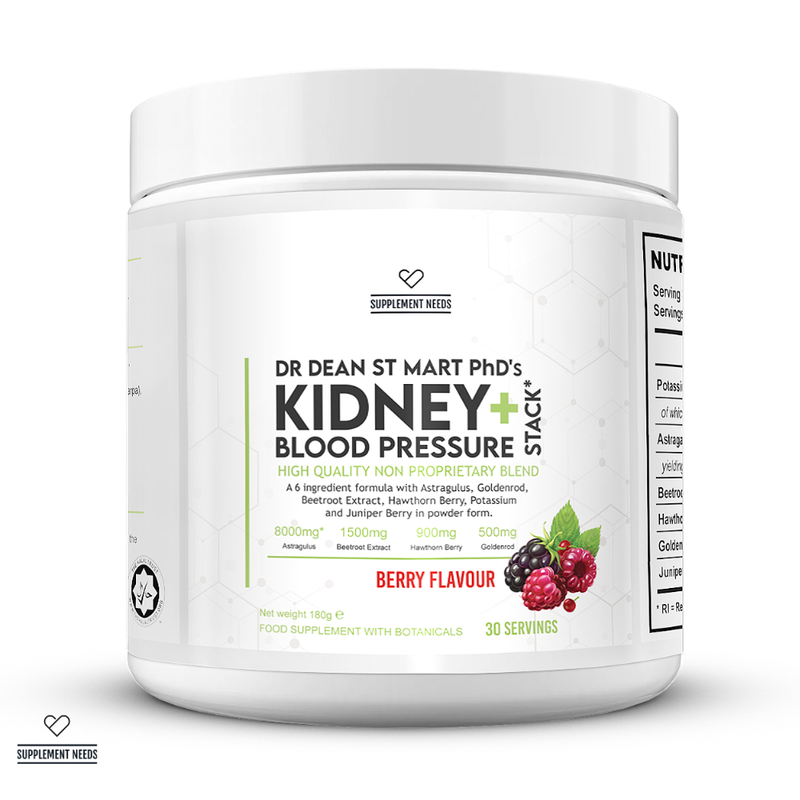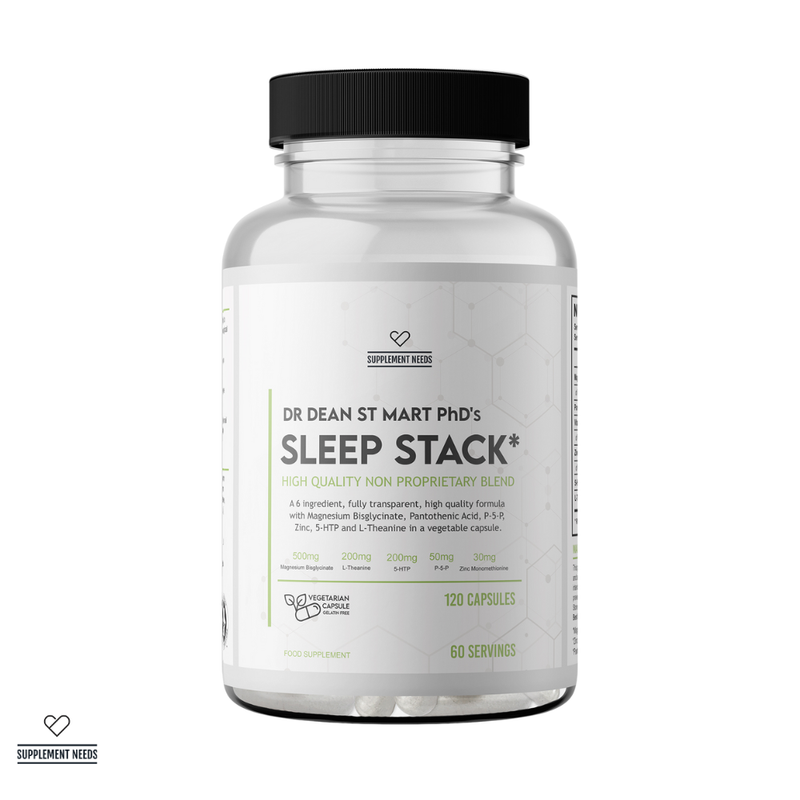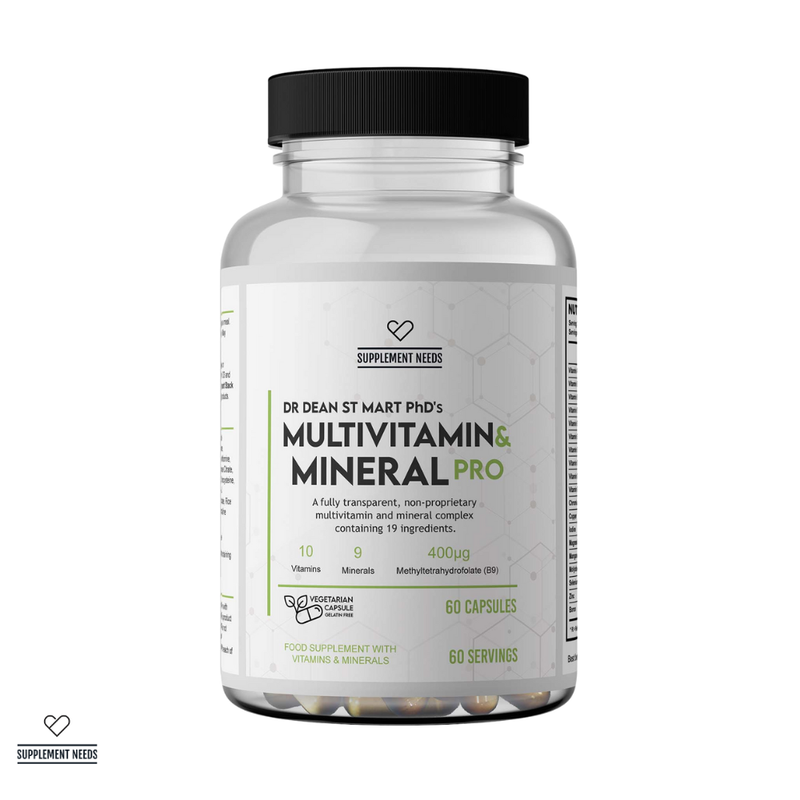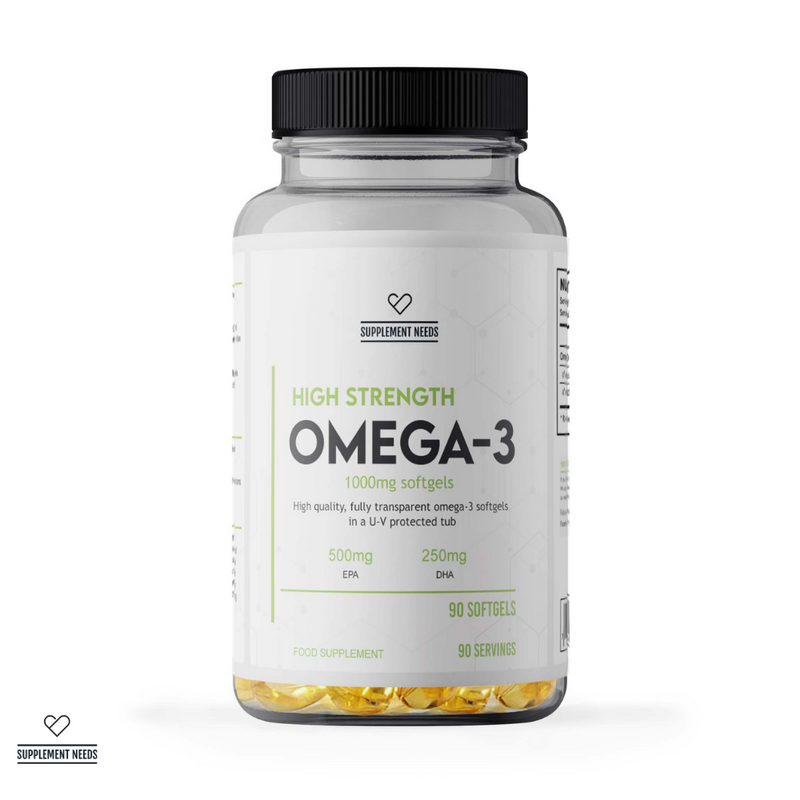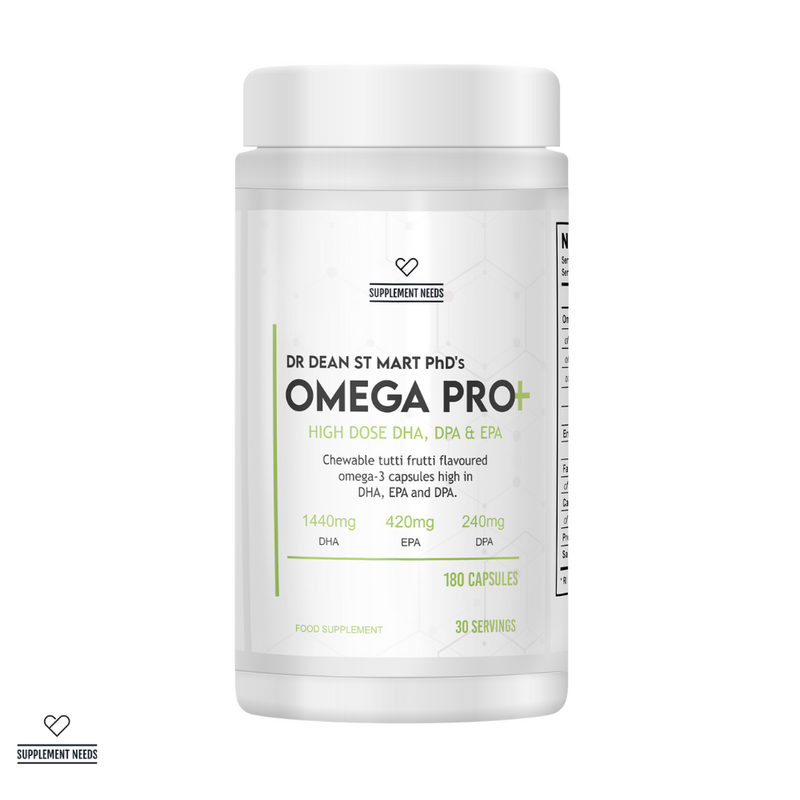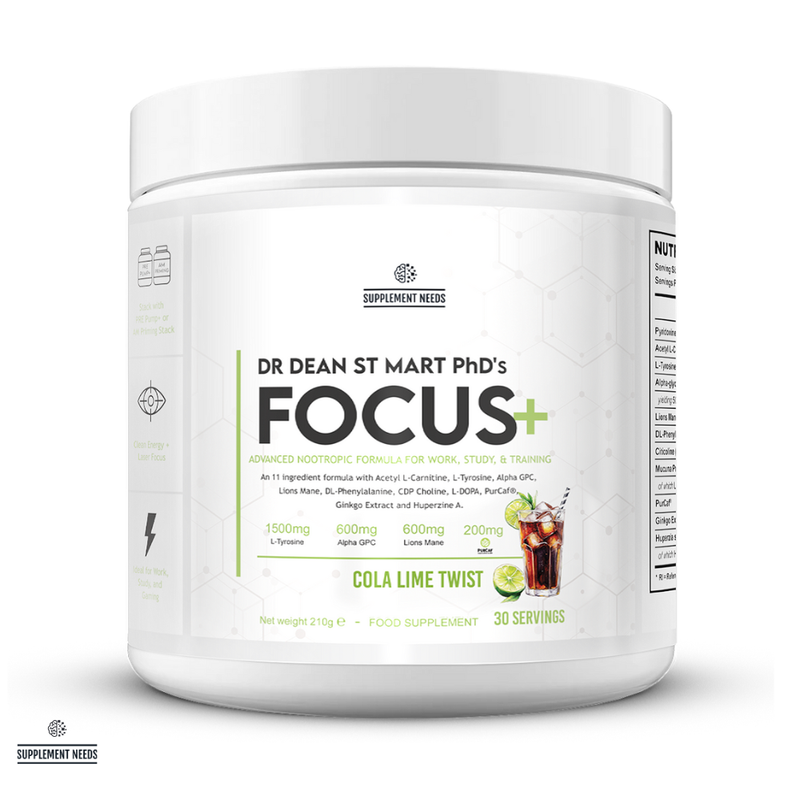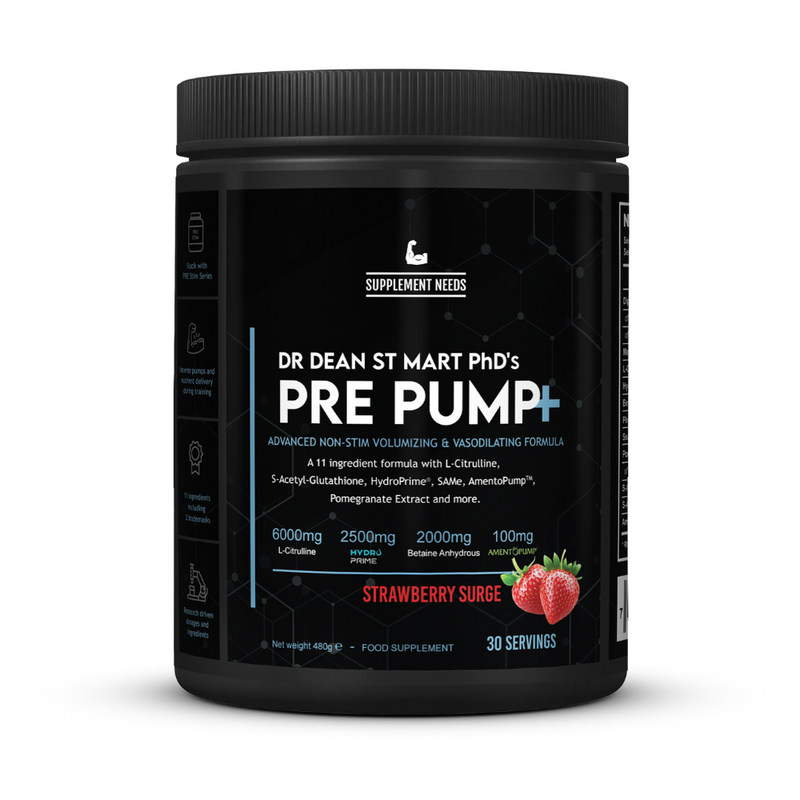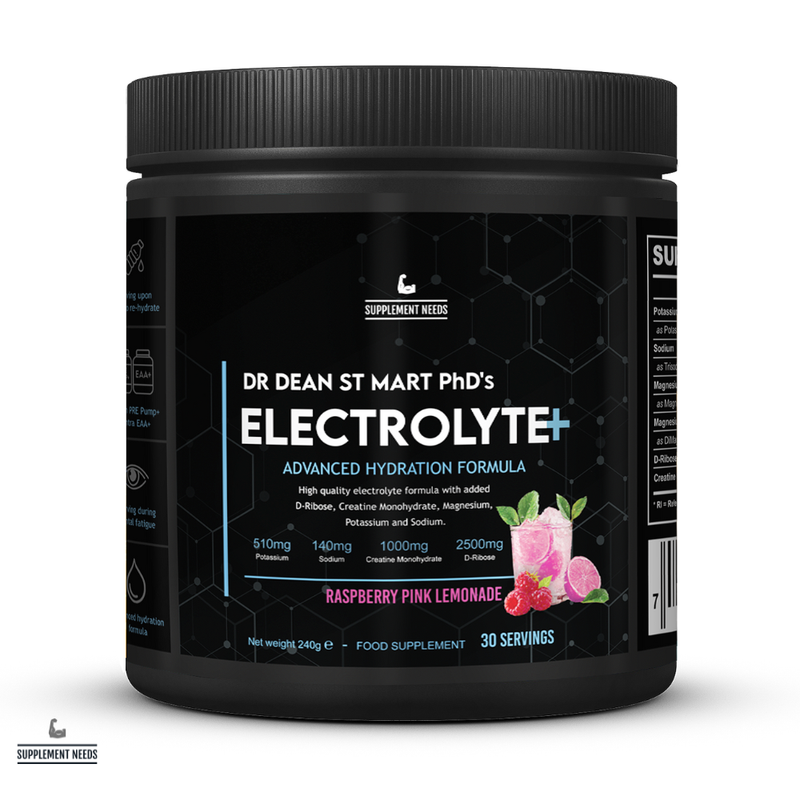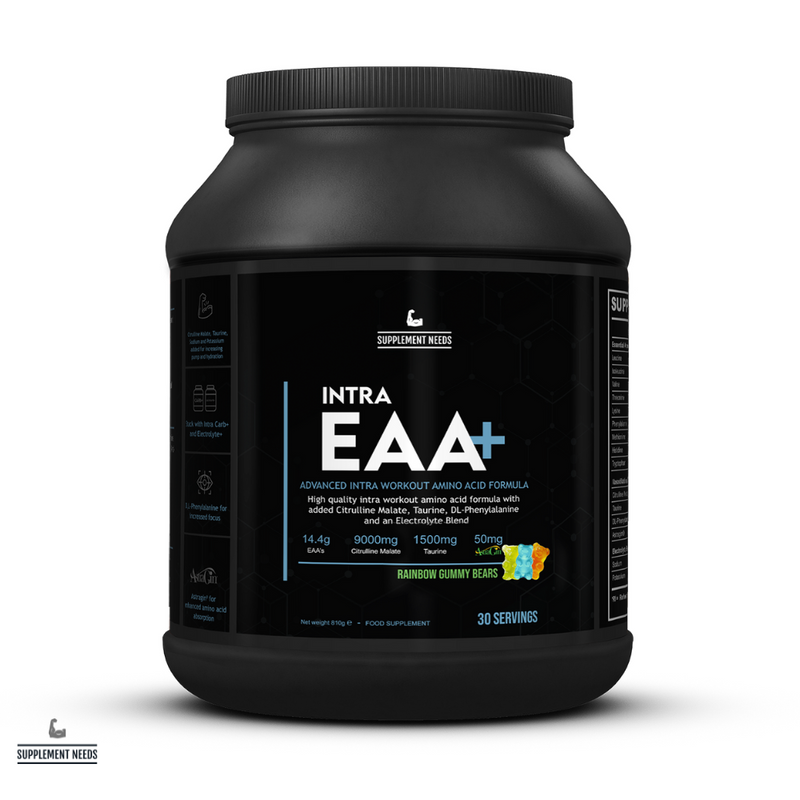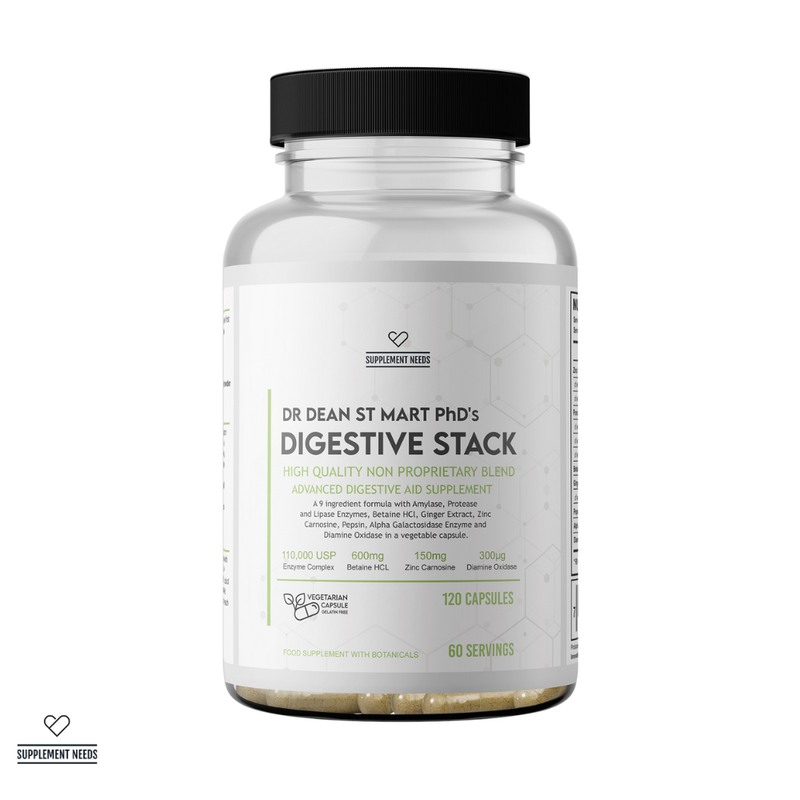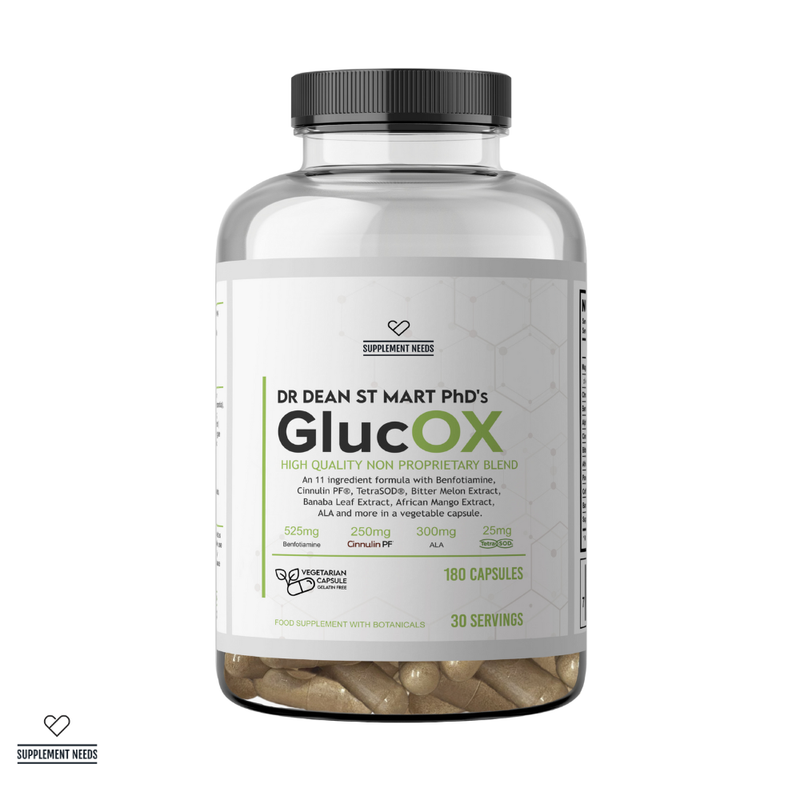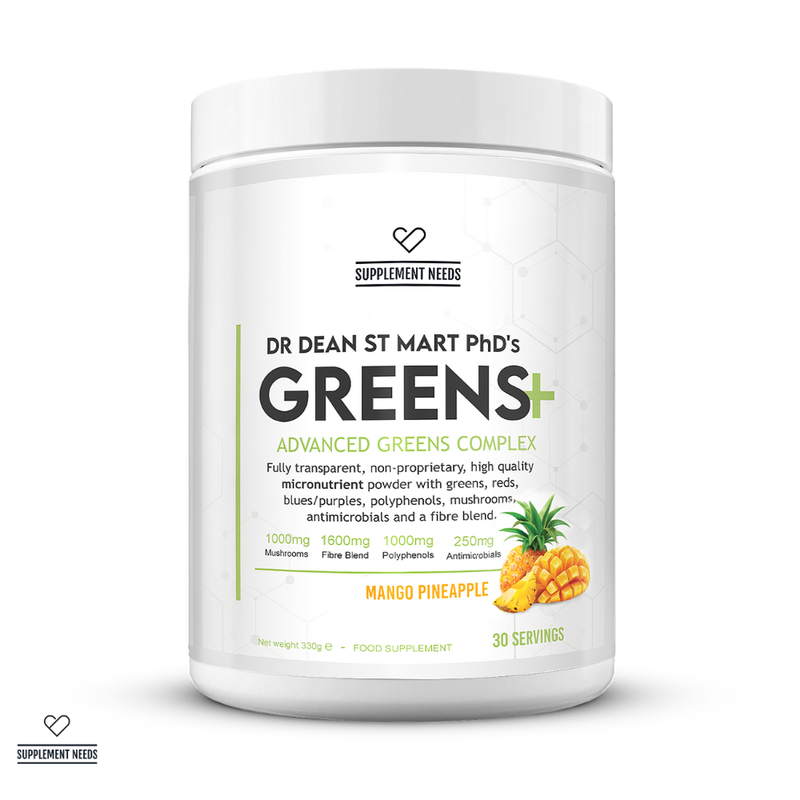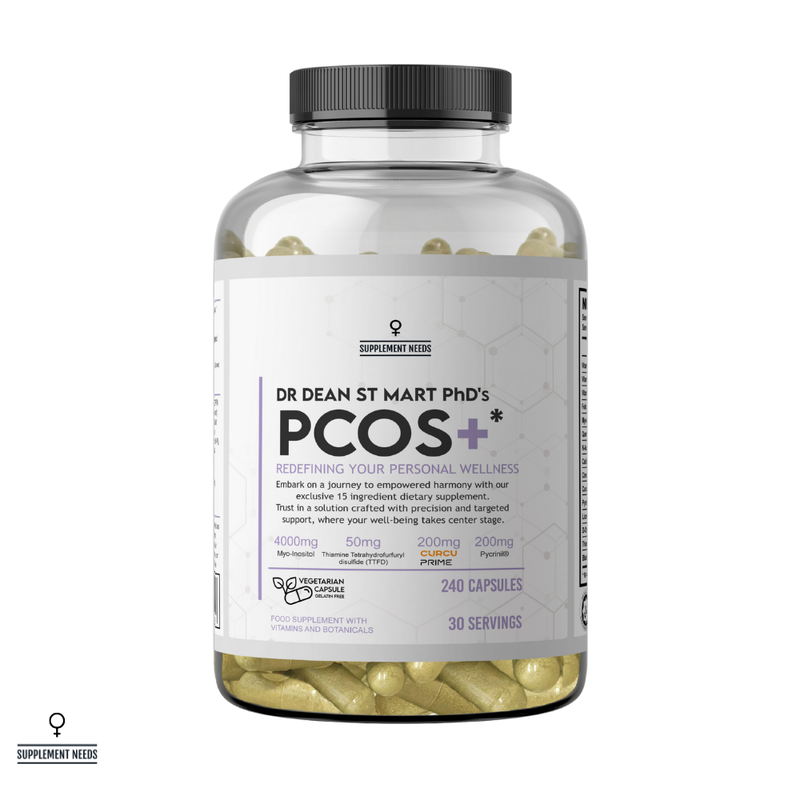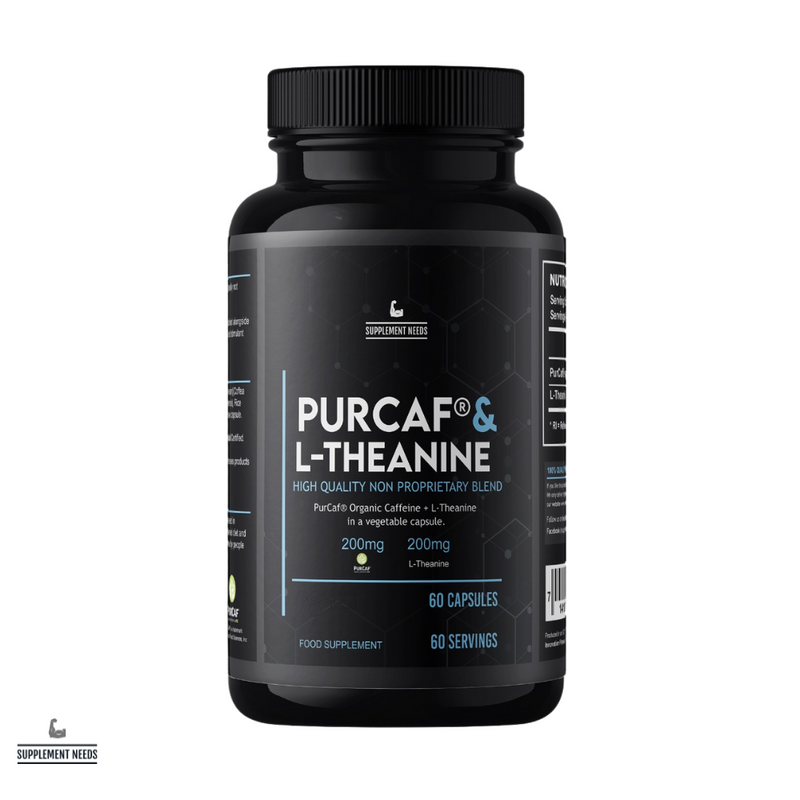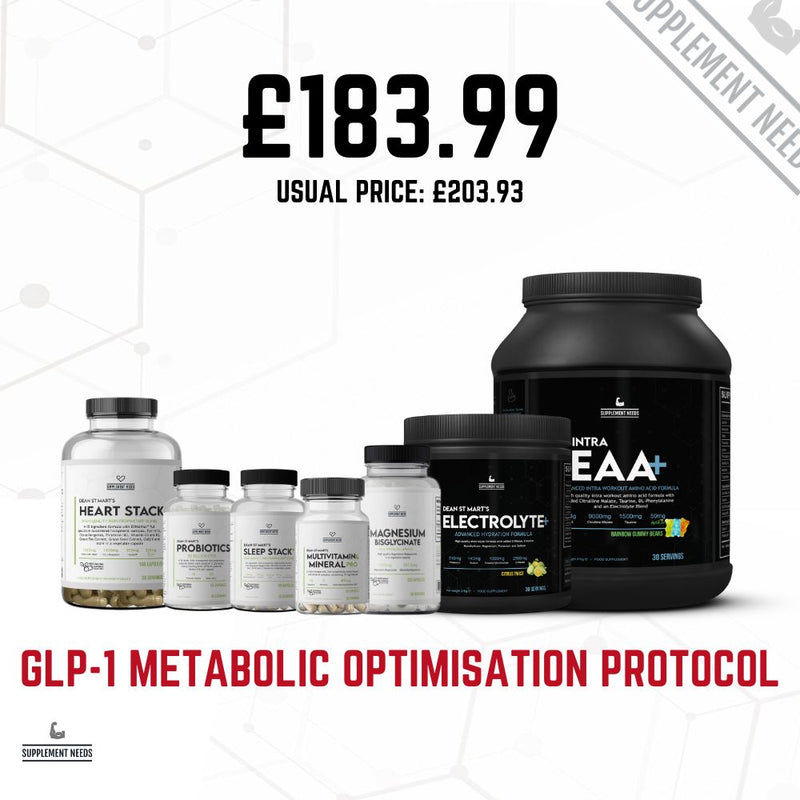For many of us, modern life is fast-paced, stressful and hectic. And, many of us need to ensure we are as productive as possible. Nootropics are an increasingly popular form of supplement that are being touted as a way of improving your focus, productivity and wellbeing. But, what exactly are they? And how do they work? As always, the Supplement Needs team has the answers…
What are Nootropics?
So what are Nootropics? Firstly, as the plural nature of the term implies, Nootropics refers to a range of compounds - not a single homogenous product.
Like many terms in the supplement space, the word Nootropics is derived from the Ancient Greek words, νόος and τροπή, meaning ‘mind’ and ‘turning’ respectively. This etymology gives a clear indication of the potential benefits of Nootropics. (It’s perhaps also why Nootropics are referred to using the somewhat generic term ‘brain supplements’).
The Oxford English Dictionary describes the word Nootropic as ‘designating or characteristic of a group of drugs considered to improve cognitive functioning, esp. to enhance memory…’1.
However, this is where a solid definition of Nootropics ends. There is no globally accepted clinical definition as to what a Nootropic substance is.
That being said, the late-Romanian psychologist and chemist, Corneliu E. Giurgea (who is widely accepted as being the first person to use the term ‘Nootropic’2), set out a series of six characteristics that a compound must meet in order to be considered a Nootropic. As per Giurgea’s paper, ‘the main features of the nootropic profile consist of:
- Enhancement of learning acquisition.
- Resistance to impairing agents.
- Facilitation of interhemispheric transfer of information.
- Enhanced resistance to brain ‘aggressions’.
- Increased tonic, cortico-subcortical ‘control’.
- Absence of usual pharmacological effects of neuro psychotropic drugs’3.
We appreciate that those characteristics may sound rather technical. So, what do they mean in ‘plain English’? Let’s take each one in turn:
- A Nootropic substance should enhance your learning and memory.
- Should improve your cognition (thinking) under stress (particularly against conditions which can disrupt cognition).
- Supports cell-to-cell communication within the brain (that’s what’s meant by interhemispheric transfer of information).
- By enhanced resistance to ‘brain agressions’, Giurgea is referencing the Nootropic ability to modulate dopaminergic transmission or release thus avoiding scenarios such as serotonin syndrome4.
- Improved control over the executive functions of your brain (such as your memory, cognitive flexibility (flexible thinking), and inhibitory control (a.k.a. self control)).
- Do not result in the neurological complications that can arise from taking traditional neuro psychotropic drugs (e.g. tardive dyskinesia, the involuntary movement of face and jaw muscles).
Ultimately, Giurgea’s own definition of Nootropics was: ‘a class of psychoactive drugs that selectively improve efficiency of higher telencephalic integrative activities’.
Again, put in more simple terms, Giurgea classes Nootropics as compounds that selectively improve ‘the ensemble of operations through which the brain accomplishes its chief function’5.
As one study6 succinctly summarised Nootropics:
‘Nootropics, also known as “smart drugs” are a diverse group of medicinal substances whose action improves human thinking, learning, and memory, especially in cases where functions are impaired’.
Note - based on the definition provided by Giurgea, there are only a handful of ‘true’ Nootropic substances. However, recent years have seen some brands attempt to widen this definition, saying that if a brain supplement boosts brain function ‘in any way’ then it is a Nootropic. So, pay close attention when buying a Nootropic supplement - it may not be the real thing!
What Nootropics are there and what are their potential benefits?
Yes, it’s true that there are a whole host of substances and compounds that have been ‘labelled’ as Nootropics.
However, it’s possible to divide these various Nootropics based upon their constituent make up. For us here at Supplement Needs, we’d argue that Nootropics can be divided as plant-based Nootropics, Nootropic amino-acids, Fungi-based Nootropics, and Cholinergic Nootropics.
Plant-based nootropics
Perhaps the most well known (and used) Nootropics are the plant-based Nootropics. Below, you’ll find some of the most well known and studied examples of plant-based Nootropics.
Ashwagandha
Binomial name: Withania somnifera
Arguably one of the most well-known (and widely marketed) Nootropics is Ashwagandha.
As an adaptogen, Ashwagandha can contribute towards neuroprotective, anti-fatigue, antidepressant, and central nervous system (CNS) stimulating activity7.
A plethora of studies reinforce the potential cognitive benefits of Ashwagandha. These include a systematic review8 of five clinical studies on ‘the clinical use of Ashwagandha to ameliorate cognitive dysfunction’. This review concluded that ‘there is some clinical evidence… to support the cognitive benefits of Withania somnifera supplementation’.
Another study9 discovered that consistent doses of Ashwagandha (two doses of 300 mg each day) led to sizable improvements in memory and focus. This was over the course of eight weeks of supplementation. The study was a randomised, double-blind, placebo-controlled study of 50 people.
Yet another study10 concluded that Ashwagandha supplementation ‘improved selected measures of executive function, helped sustain attention, and increased short-term/working memory’. (This study involved the acute supplementation of 400 mg of Ashwagandha).
Note - Ashwagandha has many other potential benefits aside from supporting cognitive function. As Ashwagandha contains withanolides, it may also have anti-inflammatory, antistress and anticancer activities.
Guide - discover more about Ashwagandha and its characteristics in our comprehensive guide to Ashwagandha.
Brahmi
Binomial name: Bacopa monnieri
Brahmi - which also goes by the name Bacopa monnieri (as well as Waterhyssop) is a botanical that has a long history, finding use in Ayurvedic medicine (which has its roots in ancient India).
Naturally, given its heritage and pedigree, Bacopa monnieri has been extensively studied as a Nootropic. Multiple clinical studies11 have indicated that the supplementation of Bacopa monnieri is linked to ‘improvements in verbal learning, delayed word recall, memory acquisition and reduced anxiety’. Some researchers have characterised Bacopa monnieri as a ‘calming cognitive enhancer’.
Aside from supporting cognitive function in healthy adults, studies12 have also suggested that Bacopa monnieri can be efficacious in individuals with age-related memory impairments.
Ginseng
Binomial name: Panax notoginseng, Panax ginseng, Panax quinquefolius
One of the most popular and well-known of the plant-based Nootropics is Ginseng.
The term Ginseng tends to be used in a generic sense, and refers to the roots of plants in the genus Panax. More precisely, when supplements reference Ginseng, it is likely they are referring to one of the following forms of Ginseng:
Whilst these varying forms of Ginseng have similar Nootropic effects, it’s important to check exactly which form you are buying; this is because much of the extant evidence base is related to specific forms of Ginseng.
For example, Panax ginseng (Korean Ginseng) has a fairly robust evidence base131415 indicating that it can reduce brain fatigue and significantly improve performance on cognitively-demanding tasks such as mathematics problems.
American Ginseng (Panax quinquefolius) has also demonstrated beneficial cognitive effects in studies. Specifically, American Ginseng has been shown16 to mitigate symptoms typical for Alzheimer’s disease.
Just as Ashwagandha has potentially beneficial properties beyond cognitive function, so too does Ginseng.
Containing ginsenosides - a class of natural product steroid glycosides and triterpene saponins - Panax ginseng has been shown17 to combat oxidative stress, and thus provide antioxidant, anti-allergic and anti-inflammatory benefits.
Siberian Ginseng
Binomial name: Eleutherococcus senticosus
Stop! Before you think we’re going to talk about another variation of Ginseng, we need to make it clear that Siberian Ginseng is very different from the Ginseng we’ve just discussed above.
Yes, Siberian Ginseng and Chinese, Korean and American Ginseng are distantly related. But, the emphasis in that sentence is on distant. The difference in their binomial names should provide an indication as to the gulf between the plants in question.
Like other forms of Ginseng, Siberian Ginseng is derived from a light tan, gnarled-looking root.
However, that’s where the similarity ends.
Siberian Ginseng - which is also known as devils bush, devils shrub, and touch-me-not - derives many of its purported benefits from eleutherosides, a diverse group of chemical compounds (such as Eleutheroside A and Eleutheroside B).
For example, Eleutheroside B has been found in certain studies18 to enhance learning and memory and generally improve cognition.
Aside from potentially providing a cognitive ‘boost’, Siberian Ginseng is another Nootropic that can provide additional potential benefits. One detailed study19 indicated that Siberian Ginseng can boost energy, metabolism and overall physical wellness.
Ginkgo
Binomial name: Ginkgo biloba
Deep within East Asia can be found the Ginkgo tree; the last living species in the order Ginkgoales. The history of this species stretches back an incredible 290 million years, and extracts of this unusual species have been used in traditional medicine for hundreds of years20.
Ginkgo has also traditionally been associated with ‘strength’ in certain cultures. This perception was particularly reinforced by the fact that six Ginkgo trees growing between one and one and a half kilometres from the 1945 atomic explosion at Hiroshima, Japan, were amongst the few living organisms to survive the blast. The six trees are still alive today.
Today, Ginkgo is a well-regarded and widely supplemented Nootropic.
Given its long history of use in traditional medicine, a plethora of modern studies have been conducted to see if historical claims about Ginkgo can stand up as modern facts.
Take one study21 that found that taking Ginkgo biloba prior to a highly stressful task can potentially reduce stress-related blood pressure and decrease levels of the stress hormone cortisol.
Why does Ginkgo have these potential cognitive benefits? The jury is still out, however one study22 suggests that Ginkgo may increase blood flow to the brain, thus providing a ‘cognitive boost’.
Further studies232425 have indicated that Ginkgo biloba supplementation (when taken daily for six weeks) can potentially improve memory and mental processing in healthy middle-aged and older adults.
Holy Basil (Tulsi)
Binomial name: Ocimum tenuiflorum
Prevalent throughout the balmy tropical and subtropical regions of Australia, Malesia, Asia is a Nootropic that has long been associated with cognitive performance.
In fact, Holy Basil (also known as Tulsi) is revered within the Hindu faith and performs an integral role within the Tulasi Vivaha ceremonial festival.
But, what role can Holy Basil play in today’s fast-paced world?
Well, like Ashwagandha, Holy Basil is an adaptogen and thus can potentially have several benefits. According to one systematic review conducted by researchers, ‘many in vitro, animal and human studies attest to tulsi having multiple therapeutic actions including adaptogenic, antimicrobial, anti-inflammatory, cardioprotective, and immunomodulatory effects’26.
For the purposes of this article, of course, we’re most interested in the Nootropic properties of Holy Basil.
Whilst the function of Holy Basil supplementation remains the topic of debate, it is speculated that Holy Basil acts upon your body’s neurotransmitters by increasing levels of dopamine and serotonin, whilst reducing epinephrine, norepinephrine and monoamine oxidase.
Further, it is believed that Holy Basil supplementation can potentially alleviate stress due to it reducing spikes in cortisol (that stress hormone that we saw earlier!).
Whilst studies regarding the clinical efficacy of Holy Basil are limited, some research27 does suggest that ‘Ocimum sanctum leaf extract seems to have potential cognition-enhancing properties in humans’.
A number of other studies have found that Holy Basil may potentially help the body deal with ‘noise stress’ (a.k.a. those annoying co-workers!). Experimental studies have demonstrated that ‘tulsi helps reduce the effects of acute and chronic noise-induced stress in experimental animals, with enhancement of neurotransmitter and oxidative stress levels in discrete brain regions along with improved immune, ECG, and corticosteroid responses’2829.
Finally, Holy Basil - which intriguingly is a member of the mint (Labiatae) family - also has a high nutritional value, being rich in Vitamin A and C and containing Calcium, Zinc, and Iron.
As you can probably tell, we’re big fans of Holy Basil here at Supplement Needs.
It’s arguably one of the most powerful, diverse and flexible of the plant-based Nootropics. It’s for those reasons that we include 800 mg (per 4 capsule serving) of Holy Basil extract in our exceptionally-popular Supplement Needs AM Priming supplement.

Note - in addition to containing Holy Basil, our AM Priming supplement also contains 600 mg of Vegan Ashwagandha KSM-66, 706 mg of Siberian Ginseng, 340 mg of Rhodiola Rosea extract, 300 mg of Bacopa Monneri extract, and 200 mg of Periwinkle extract. Designed by Dr. Dean St Mart PhD, our AM Priming supplement is designed to be the ultimate Nootropic stack.
Rhodiola
Binomial name: Rhodiola rosea
Up in the cold, mountainous, and remote regions of both Europe and Asia can be found a small perennial flowering plant that has considerable Nootropic properties; the Rhodiola rosea.
Often referred to simply as Rhodiola, this remarkable plant contains over 140 chemical compounds including (but not limited to) phenols, rosavin, rosin, organic acids, terpenoids, phenolic acids, flavonoids, alkaloids and more.
Although today we know the composition of Rhodiola thanks to the wonders of modern science, people must have instinctually known that Rhodiola was packed with useful compounds. The first recorded use of Rhodiola for medicinal purposes was in 77 CE by the Greek physician Dioscorides30.
That’s all very well, but what Nootropic properties does Rhodiola have? And, what’s the evidence base?
As an adaptogen, Rhodiola has been extensively studied and has been linked with reductions in stress and anxiety, and improvements in cognition among study participants31.
If, like many people, you work in a stressful environment and occasionally suffer burnout, you’ll be interested in the findings of another study.
Taking 118 people who reported symptoms of stress-related burnout, a team of researchers invited them to take 400 mg of Rhodiola daily for 12 weeks. The results of the study32 suggested that participants show clear improvement in various burnout-related symptoms such as stress and depression.
From a more specific cognitive angle, there is a degree of evidence to suggest that Rhodiola may improve both learning and retentive memory. A systematic review of tens of animal-based studies indicated that Rhodiola ‘improves learning and memory function in experimental models’33.
Nootropic amino-acids
In addition to plant-based Nootropics, there are several amino-acid based Nootropics. These amino-acid Nootropics are, like many amino acids, available in a broad range of foodstuffs.
However, like the other Nootropics discussed in this article, numerous Nootropic amino-acids are available in supplemental form. Below, we’ve highlighted what is arguably the most popular and important of the Nootropic amino acids.
L-Theanine
First discovered in 1949 as an important constituent of green tea, L-Theanine is an amino-acid analogue of L-Glutamate and L-Glutamine (Proteinogenic amino acids).
The main beneficial property that is commonly linked with L-Theanine is its purported ability to reduce anxiety upon consumption.
How does it do this? Researchers have postulated that L-Theanine helps to reduce anxiety by enhancing alpha brain wave activity and increasing the synthesis of GABA (Gamma-Aminobutyric Acid)34. In turn, the increased levels of GABA induce a concomitant increase in brain levels of dopamine and serotonin35 - thus reducing feelings of anxiety.
A wealth of other studies have indicated that L-Theanine (as a constituent of green tea) can have a calming effect, without inducing drowsiness3637. A win, win for those who want to remain calm and productive!
A study38 has also linked L-Theanine consumption with creativity (due to L-Theanine increasing alpha brain wave activity which is correlated with creative ideation).
It’s perhaps clear why so many people select L-Theanine as their Nootropic of choice!

Due to L-Theanine’s reported ability to reduce anxiety and induce relaxation, Supplement Needs product formulator, Dr. Dean St Mart PhD, decided to include it in the Supplement Needs PM Priming product. This has been designed to be the ultimate ‘advanced cortisol management’ stack, helping you to maintain mental wellness and wellbeing.
Carnitine
Another of the Nootropic amino-acids is Carnitine.
Aside from being one of the most critical amino acids in energy production - being a cofactor that helps transport long-chain fatty acids into the mitochondria to create ATP - Carnitine also has potential Nootropic benefits.
It’s important to note that there are several distinct, different types of Carnitine:
- L-Carnitine - the standard biologically active form of Carnitine.
- Acetyl-L-Carnitine - this is often posed as being the truly Nootropic form of Carnitine39.
- Propionyl-L-Carnitine - this is a propionyl ester of Carnitine.
- L-Carnitine L-Tartrate - this is an artificially synthesised form of Carnitine that has been bonded with tartaric acid.
Whilst we’ve seen that Carnitine’s major function within the body is to support energy production, it does have some reported Nootropic effects.
Let’s take a look at the evidence:
- A study40 conducted in 2020 found that Acetyl-L-Carnitine, when taken daily for 28 days at a dose of 1.5 mg, significantly improved brain function in people with dementia.
- Another study41 performed on mice found that chronic supplementation of Acetyl-L-Carnitine increased brain energy metabolism and increased noradrenaline and serotonin levels.
Here at Supplement Needs, Acetyl-L-Carnitine plays a central role in our Nootropic pre-workout product, Supplement Needs Pre Focus+. We’ve included 1.5 mg of Acetyl-L-Carnitine in every 7.5 g serving.
Fungi-based Nootropics
Recent years have seen a surge of interest in mycological-based supplements, driven in part by the popularisation of fungi by Merlin Sheldrake’s hugely-popular book Entangled Life.
In particular, supplementation experts have been delving into the potential Nootropic properties of certain types of mushroom extracts. The most popular of which we’ve detailed below…
Lion’s Mane
Binomial name: Hericium erinaceus
Named Lion’s Mane due to their physical resemblance to their namesake, the Lion’s Mane mushroom is native to Europe, North America and parts of Asia.
Closely studied by mycologists for years, and now under the microscope of scientists (literally), Lion’s Mane has been found to contain a diverse array of phytochemicals. These phytochemicals include polysaccharides as well as hericenones and erinacines. It’s these hericenones and erinacines (both of which represent a class of substances that have been isolated from Hericium erinaceus) that have attracted the most attention of researchers.
Hericenones are a class of benzaldehydes which are believed to promote nerve growth factor synthesis in vitro. Nerve growth factor (NGF) is important as it has potential biological activities, including preventing neuronal death and promoting neurite outgrowth42.
Given that a functional deficiency of NGF is seen as related to Alzheimer’s disease and plays a part in the aetiology of the disease process, it’s perhaps not surprising that some scientists have focused on benzaldehydes within Lion’s Mane.
Erinacines belong to cyathin diterpenoids, and have also been linked to nerve factor growth synthesis in vitro43.
We appreciate we’re getting a bit technical here, so let’s look at some of the potential benefits of Lion's Mane in more straightforward terms.
Arguably the purported benefit of Lion’s Mane that has received the most attention has been its protective effect against dementia. As we’ve just seen, Lion's Mane contains two compounds that can potentially stimulate the growth of brain cells - erinacines and hericenones44.
Further studies have suggested that Lion’s Mane can reduce the symptoms of memory loss (admittedly though, these were animal-based studies45).
Finally, a relatively new study from early 202346, explored the ways in which the compounds within Lion’s Mane may provide cognitive benefits. The research focused on a compound called N-de phenylethyl isohericerin (NDPIH).
Subsequent tests found that hippocampal neurons (the hippocampus being the part of the brain responsible for memory, learning and motion) grew after exposure to NDPIH and Hericene A (this latter being a derivative of NDPIH). The neurons also demonstrated larger growth cones.
As part of the study’s conclusion, the researchers stated that ‘our study reveals that hericene A enhances recognition memory at concentrations as low as 5 mg/kg/day’.
Yes, this is just a single study. And, yes, some experts doubt the conclusions of the experiment given that it was conducted on mice, not humans. However, it does add to the evidence base that suggests that Lion’s Mane could potentially have cognitive benefits.

Naturally, Supplement Needs has stayed abreast of the latest research on Lion’s Mane, which is why you’ll find it included in our Supplement Needs Pre Focus+ product. This product is designed to maximally increase concentration whilst supporting general mental wellbeing.
This is one of the only Nootropic pre-workouts on the market and in addition to Lion’s Mane contains several other Nootropic ingredients, including CDP Choline, Caffeine, and Ginkgo.
Cholinergic Nootropics
A fourth class of Nootropics is Cholinergic Nootropics. These refer to Nootropic supplements that contain Choline and attempt to increase your bodily levels of Acetylcholine (an important molecule that acts as a neurotransmitter).
Alpha-GPC
Alpha-GPC, or to give it its full technical name, L-alpha-glycerylphosphorylcholine, is the active and highly-bioavailable form of Choline47.
By increasing Acetylcholine levels within the body, supplementing Alpha-GPC may have a number of Nootropic-like benefits, specifically in relation to memory and brain function.
A study48 that particularly struck our attention saw 2,195 participants aged between 70 and 74. These participants were asked to perform several memory and learning tasks. The conclusion? Those with higher blood levels of choline performed significantly better.
A study49 conducted on mice found that chronic Choline supplementation over their life span significantly improved memory. Choline supplementation in mice was also found to reduce the formation of amyloid-beta plaques (compounds linked to the development of Alzheimer’s)50.
Note - if you want to ensure you have optimal Choline levels in your body, you may want to take substances that impede Choline breakdown such as Ginkgo and Bacopa monnieri51. That’s why, for example, we stack CDP Choline alongside Ginkgo and Huperzine A52 in Pre Focus+. By taking this you’ll not only be ‘topping up’ your Choline, but adding substances such as Ginkgo that help prevent Choline breakdown. Win, win!
Not only is Choline found in many of Supplement Needs’ Nootropic products, but we have also developed a dedicated Alpha-GPC supplement that’s designed to provide you with the most bioavailable form of Choline.

Dr. Dean St Mart PhD has formulated Supplement Needs Alpha-GPC to use 50% yielding Alpha-GPC to provide 300 mg active Alpha-GPC per two capsule 600 mg serving.
Can you mix Nootropics?
As you can see, there are a constellation of different Nootropics available. Each has different properties and characteristics, and many have evidence-backed benefits.
The thing is, many people often want to enjoy a blend of characteristics/benefits.
For example, you may want to really improve your focus and concentration with some Ashwagandha. But, you may also want to bolster the cognitive load you can manage and induce a sense of calm with some Holy Basil.
But, unless you’ve got an extensive knowledge of organic chemistry and pharmacology, you’re probably not going to know how to safely and effectively mix Nootropic substances together.
The answer?
Get an expert to create the perfect blend of Nootropics for you!
That’s exactly what we’ve done here at Supplement Needs. We have created the perfect Nootropic stacks designed for various parts of the day and/or activities.

For example, one of our most popular options is our Ultimate Productivity Stack. This combines both our Supplement Needs AM Priming capsules with our Supplement Needs Pre Focus+. These are the ultimate, premium, Nootropic stacks designed to prime the body and mind against daily stress alongside precision mental clarity and focus.
Our product formulator is Dr. Dean St Mart PhD. Dr Dean holds a double first class honours degree in chemistry and pharmaceutical chemistry from the National University of Ireland Maynooth (where he finished top of the university). He also holds a PhD in synthetic organic chemistry and fluorescence spectroscopy.
His interest in Nootropics is deep and expansive and he has used his years of research and experience to craft the ultimate Nootropic blends. Explore our Nootropics range today and start to prime your mind for success.
Explore Supplement Needs’ Nootropics range now
Disclaimer
The information on this website should not be used as a substitute for professional medical advice or care. If you have questions about your health, please contact your doctor.
References
1. Oxford English Dictionary. Nootropic [online]. Available at: https://www.oed.com/search/advanced/Meanings?scope=HistoricalThesaurus&q=nootropic (Accessed on 30th January 2024).
2. Giurgea C, Salama M. Nootropic Drugs: Progress in Neuro-Psychopharmacology [online]. Available at: https://www.sciencedirect.com/science/article/abs/pii/0364772277900467?via%3Dihub (Accessed on 30th January 2024).
3. Giurgea C, Salama M. Nootropic Drugs: Progress in Neuro-Psychopharmacology [online]. Available at: https://www.sciencedirect.com/science/article/abs/pii/0364772277900467?via%3Dihub (Accessed on 30th January 2024).
4. Klasen M, Wolf D, Eisner P (et al). Serotonergic Contributions to Human Brain Aggression Networks [online]. Available at: https://www.frontiersin.org/articles/10.3389/fnins.2019.00042/full (Accessed on 31st January 2024).
5. Giurgea C. Fundamentals to a Pharmacology of the Mind. Illinois: Charles C Thomas, 1981.
6. Malík M, Tlustoš P. Nootropics as Cognitive Enhancers: Types, Dosage and Side Effects of Smart Drugs [online]. Available at: https://www.ncbi.nlm.nih.gov/pmc/articles/PMC9415189/ (Accessed on 30th January 2024).
7. Panossian A, Wikman G. Effects of Adaptogens on the Central Nervous System and the Molecular Mechanisms Associated with Their Stress-Protective Activity [online]. Available at: https://www.ncbi.nlm.nih.gov/pmc/articles/PMC3991026/ (Accessed on 30th January 2024).
8. Ng Q, Loke W, Foo N, Tan W, Chan H, Lim D, Yeo W. A systematic review of the clinical use of Withania somnifera (Ashwagandha) to ameliorate cognitive dysfunction [online]. Available at: https://pubmed.ncbi.nlm.nih.gov/31742775/ (Accessed on 30th January 2024).
9. Choudhary D, Bhattacharyya S, Bose S. Efficacy and Safety of Ashwagandha (Withania somnifera (L.) Dunal) Root Extract in Improving Memory and Cognitive Functions [online]. Available at: https://pubmed.ncbi.nlm.nih.gov/28471731/ (Accessed on 30th January 2024).
10. Xing D, Yoo C, Gonzalez D (et. al). Effects of Acute Ashwagandha Ingestion on Cognitive Function [online]. Available at: https://www.ncbi.nlm.nih.gov/pmc/articles/PMC9565281/ (Accessed on 30th January 2024).
11. Walker E, Pellegrini M. National Library of Medicine: National Centre for Biotechnology Information: Bacopi monnieri [online]. Available at: https://www.ncbi.nlm.nih.gov/books/NBK589635/# (Accessed on 30th January 2024).
12. Raghav S, Singh H, Dalal P, Srivastava J, Asthana O. Randomised controlled trial of standardised Bacopa monniera extract in age-associated memory impairment [online]. Available at: https://www.ncbi.nlm.nih.gov/pmc/articles/PMC2915594/ (Accessed on 30th January 2024).
13. Reay J, Kennedy D, Scholey A. Single doses of Panax ginseng (G115) reduce blood glucose levels and improve cognitive performance during sustained mental activity [online]. Available at: https://pubmed.ncbi.nlm.nih.gov/15982990/ (Accessed on 30th January 2024).
14. Reay J, Kennedy D, Scholey A. Effects of Panax ginseng, consumed with and without glucose, on blood glucose levels and cognitive performance during sustained ‘mentally demanding’ tasks [online]. Available at: https://pubmed.ncbi.nlm.nih.gov/16401645/ (Accessed on 30th January 2024).
15. Reay J, Scholey A, Kennedy D. Panax ginseng (G115) improves aspects of working memory performance and subjective ratings of calmness in healthy young adults [online]. Available at: https://pubmed.ncbi.nlm.nih.gov/20737519/ (Accessed on 30th January 2024).
16. Szczuka D, Nowak A, Zakłos-Szyda M, Kochan E, Szymańska G, Motyl I, Blasiak. American Ginseng (Panaz quinquefolium L.) as a Source of Bioactive Phytochemicals with Pro-Health Properties [online]. Available at: https://www.ncbi.nlm.nih.gov/pmc/articles/PMC6567205/ (Accessed on 30th January 2024).
17. Hyun S, Bhilare K, In G, Park C, Kim J. Effects of Panax ginseng and ginsenosides on oxidative stress and cardiovascular diseases: pharmacological and therapeutic roles [online]. Available at: https://www.ncbi.nlm.nih.gov/pmc/articles/PMC8753520/# (Accessed on 30th January 2024).
18. Huang D, Hu Z, Yu Z. Eleutherpside B or E enhances learning and memory in experimentally aged rats [online]. Available at: https://www.ncbi.nlm.nih.gov/pmc/articles/PMC4145894/ (Accessed on 30th January 2024).
19. Kuo J, Chen K, Cheng I, Tsai P, Lu Y, Lee N. The effect of eight weeks of supplementation with Eleutheroccocus senticosus on endurance capacity and metabolism in humans [online]. Available at: https://pubmed.ncbi.nlm.nih.gov/21793317/ (Accessed on 30th January 2024).
20. McCune L. Chapter 15 - A Review of the Antioxidant Actions of Three Herbal Medicines (Crataegus monogyna, Ginkgo biloba, and Aesculus hippocastanum) on the Treatment of Cardiovascular Diseases: in, Bioactive Food as Dietary Interventions for Cardiovascular Disease. BotanyDoc Education and Consulting Services.
21. Jezova D, Duncko R, Lassanova M, Kriska M, Moncek F. Reduction of rise in blood pressure and cortisol release during stress by Ginkgo biloba extract (EGb 761) in health volunteers [online]. Available at: https://pubmed.ncbi.nlm.nih.gov/12369732/ (Accessed on 31st January 2024).
22. Santos R, Galduroz J, Barbieri A, Castiglioni M, Ytaya L, Bueno O. Cognitive performance, SPECT, and blood viscosity in elderly non-demented people using Ginkgo biloba [online]. Available at: https://pubmed.ncbi.nlm.nih.gov/12905098/ (Accessed on 31st January 2024).
23. Mix J, Crews W. An examination of the efficacy of Ginkgo biloba extract EGb761 on the neuropsychologic functioning of cognitively intact older adults [online]. Available at: https://pubmed.ncbi.nlm.nih.gov/10890330/ (Accessed on 31st January 2024).
24. Kashel R. Specific memory effects of Ginkgo biloba extract EGb 761 in middle-aged healthy volunteers [online]. Available at: https://pubmed.ncbi.nlm.nih.gov/21802920/ (Accessed on 31st January 2024).
25. Mix J, Crews W. A double-blind, placebo-controlled, randomised trial of Ginkgo biloba extract EGb 761 in a sample of cognitively intact older adults: neuropsychological findings [online]. Available at: https://pubmed.ncbi.nlm.nih.gov/12404671/ (Accessed on 31st January 2024).
26. Jamshidi N, Cohen M. The Clinical Efficacy and Safety of Tulsi in Humans: A Systematic Review of the Literature [online]. Available at: https://www.hindawi.com/journals/ecam/2017/9217567/ (Accessed on 31st January 2024).
27. Sampath S, Mahapatra S, Padhi M, Sharma R, Talwar A. Holy basil (Ocimum sanctum Linn.) leaf extract enhances specific cognitive parameters in healthy adult volunteers: A placebo controlled study [online]. Available at: https://pubmed.ncbi.nlm.nih.gov/26571987/# (Accessed on 31st January 2024).
28. Samson J, Sheeladevi R, Ravindran R. Oxidative stress in brain and antioxidant activity of Ocimum sanctum in noise exposure [online]. Available at: https://pubmed.ncbi.nlm.nih.gov/17379314/ (Accessed on 31st January 2024).
29. Sembulingam K, Sembulingam P, Namasivayam A. Effect of Ocimum sanctum Linn on the changes in central cholinergic system induced by acute noise stress [online]. Available at: https://pubmed.ncbi.nlm.nih.gov/15619567/ (Accessed on 31st January 2024).
30. Drugs.com. Rhodiola Rosea [online]. Available at: https://www.drugs.com/npp/rhodiola-rosea.html (Accessed on 31st January 2024).
31. Cropley M, Banks A, Boyle J. The Effects of Rhodiola rosea L. Extract on Anxiety, Stress, Cognition and Other Mood Symptoms [online]. Available at: https://pubmed.ncbi.nlm.nih.gov/26502953/ (Accessed on 31st January 2024).
32. Kasper S, Dienel A. Multicentre, open-label, exploratory clinical trial with Rhodiola rosea extract in patients suffering from burnout symptoms [online]. Available at: https://www.ncbi.nlm.nih.gov/pmc/articles/PMC5370380/ (Accessed on 31st January 2024).
33. Ma G, Zheng Q, Xu M, Zhou X, Lu L, Li Z, Zheng G. Rhodiola rosea L. Improves Learning and Memory Function: Preclinical Evidence and Possible Mechanisms [online]. Available at: https://www.ncbi.nlm.nih.gov/pmc/articles/PMC6288277/ (Accessed on 31st January 2024).
34. Juneja L, Chu D, Okubo T, Nagato Y, Yokogoshi. L-theanine - a unique amino acid of green tea and its relaxation effect in humans [online]. Available at: https://www.sciencedirect.com/science/article/abs/pii/S0924224499000448 (Accessed on 31st January 2024).
35. Mason R. 200mg of Zen: L-Theanine Boosts Alpha Waves, Promotes Alert Relaxation [online]. Available at: https://www.researchgate.net/publication/244889510_200_mg_of_Zen_L-Theanine_Boosts_Alpha_Waves_Promotes_Alert_Relaxation (Accessed on 31st January 2024).
36. Dietz C, Dekker M. Effect of Green Tea Phytochemicals on Mood and Cognition [online]. Available at: https://pubmed.ncbi.nlm.nih.gov/28056735/ (Accessed on 31st January 2024).
37. Nobre A, Rao A, Owen G. L-theanine, a natural constituent in tea, and its effect on mental state [online]. Available at: https://pubmed.ncbi.nlm.nih.gov/18296328/ (Accessed on 31st January 2024).
38. Fink A, Benedek M. EEF alpha power and creative ideation [online]. Available at: https://www.ncbi.nlm.nih.gov/pmc/articles/PMC4020761/ (Accessed on 31st January 2024).
39. Traina G. The neurobiology of acetyl-l-carnitine [online]. Available at: https://pubmed.ncbi.nlm.nih.gov/27100509/ (Accessed on 31st January 2024).
40. Pennisi M, Lanza G, Cantone M, D’Amico E (et al). Acetyl-L-Carnitine in Dementia and Other Cognitive Disorders: A Critical Update [online]. Available at: https://www.ncbi.nlm.nih.gov/pmc/articles/PMC7284336/ (Accessed on 31st January 2024).
41. Smeland O, Meisingset T, Borges K, Sonnewald U. Chronic acetyl-l-carnitine alters brain energy metabolism and increases noradrenaline and serotonin content in healthy mice [online]. Available at: https://pubmed.ncbi.nlm.nih.gov/22549035/ (Accessed on 31st January 2024).
42. Ma B, Shen J, Yu H, Ruan Y, Wu T, Zhao X. Hericenones and erinacines: stimulators of nerve growth factor (NGF) biosynthesis in Hericium erinaceus [online]. Available at: https://www.tandfonline.com/doi/full/10.1080/21501201003735556 (Accessed on 31st January 2024).
43. Kawagishi H, Shimada A, Shirai R, Okamoto K, Ojima F, Sakamoto H, Ishiguro Y, Furukawa S. Erinacines A, B and C, strong stimulators of nerve growth factor (NGF)-synthesis, from the mycelia of Hericium erinaceum [online]. Available at: https://www.sciencedirect.com/science/article/abs/pii/S0040403900767608?via%3Dihub (Accessed on 31st January 2024).
44. Kushairi N, Phan C, Sabaratnam V, David P, Naidu M. Lion’s Mane Mushroom, Hericium erinaceus (Bull.: Fr.) Pers. Suppresses H₂O₂-Induced Oxidative Damage and LPS-Induced Inflammation in HT22 Hippocampal Neurons and BV2 Microglia [online]. Available at: https://www.ncbi.nlm.nih.gov/pmc/articles/PMC6720269/ (Accessed on 31st January 2024).
45. Tsai-Teng T, Chin-Chu C, Li-Ya L, Wan-Ping C (et al). Erinacine A-enriched Hericium erinaceus mycelium ameliorates Alzheimer’s disease-related pathologies in APPswe/PS1dE9 transgenic mice [online]. Available at: https://pubmed.ncbi.nlm.nih.gov/27350344/ (Accessed on 31st January 2024).
46. Martínez-Marmol R, Chai Y, Conroy J (et al). Hericerin derivatives activates a pan-neurotrophic pathway in central hippocampal neurons converging to ERK1/2 signalling enhancing spatial memory [online]. Available at: https://onlinelibrary.wiley.com/doi/10.1111/jnc.15767 (Accessed on 31st January 2024).
47. Parnetti L, Mignini F, Tomassoni D (et al). Cholinergic precursors in the treatment of cognitive impairment of vascular origin: ineffective approaches or need for re-evaluation? [online]. Available at: https://pubmed.ncbi.nlm.nih.gov/17331541/ (Accessed on 31st January 2024).
48. Nurk E, Refsum H, Bjelland I (et al). Plasma free choline, betaine and cognitive performance: the Hordaland Health Study [online]. Available at: https://pubmed.ncbi.nlm.nih.gov/22717142/ (Accessed on 31st January 2024).
49. Tabassum S, Haider S, Ahmad S (et al). Chronic choline supplementation improves cognitive and motor performance via modulating oxidative and neurochemical status in rats [online]. Available at: https://pubmed.ncbi.nlm.nih.gov/28642069/ (Accessed on 31st January 2024).
50. Velazquez R, Ferreira E, Knowles S. Lifelong choline supplementation ameliorates Alzheimer’s disease pathology and associated cognitive deficits by attenuating microglia activation [online]. Available at: https://pubmed.ncbi.nlm.nih.gov/31560162/ (Accessed on 31st January 2024).
51. Peth-Nui T, Wattanathorn J, Muchimapura S (et al). Effects of 12-Week Bacopa monnieri Consumption on Attention, Cognitive Processing, Working Memory, and Functions of Both Cholinergic and Monoaminergic Systems in Healthy Elderly Volunteers [online]. Available at: https://pubmed.ncbi.nlm.nih.gov/23320031/ (Accessed on 31st January 2024).
52. Tun M, Herzon S. The pharmacology and therapeutic potential of (-)- huperzine A [online]. Available at: https://pubmed.ncbi.nlm.nih.gov/27186124/ (Accessed on 31st January 2024).
